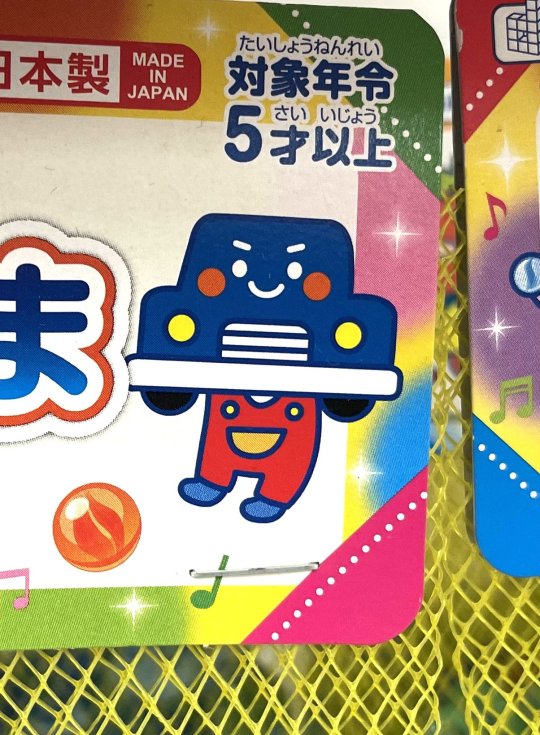#汉字
Text


Super long character practice: biáng and huáng
The first is often considered the character with the most strokes and refers to a type of noodle (biangbiang mian).
The second has more strokes but isn’t really a word. It’s considered an artistic representation of heaven, in character form.
I feel like biáng was actually possible to get somewhat decent, but huáng was just incredibly difficult to get the spacing right 😂
12 notes
·
View notes
Text
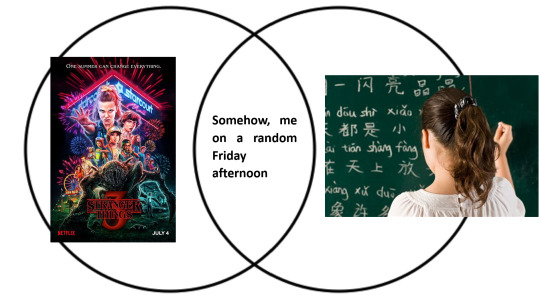
STRANGER THINGS IN CHINESE -VOCAB LIST
so... i was bored and wanted to find some vocab list about stranger things in chinese but i couldn't find any... so I finally decided to go look for it myself on diverse chinese speaking websites who were talking about the show. I also used pleco for some more generic words usefull to speak about the show.
I hope some other people will also fit on my venn diagram of hyperfixation and find this list useful ^^
怪奇物語(guài qí wù yǔ)stranger things
颠倒世界(diān dǎo shì jiè)the upside down
夺心魔 (duó xīn mó)the mind flayer
魔狗 (mó gǒu) demodog
魔王 (mó wáng) demogorgon
魔蝙蝠 (mó biān fú) demobat
藤蔓 (téng wàn) the vines
怪兽 (guài shòu) the monster
维克那 (wéi kè nà) vecna
集体意识 (jí tǐ yì shí) the hive mind
火俱乐部 ( huǒ jù lè bù) the hellfire club
龙与地下城 (lóng yǔ dì xià chéng) dungeons and dragons
棒球棒 (bàng qiú bàng) baseball bat
圣诞灯 (shèng dàn dēng) christmas lights
纹身 (wén shēn) tattoo
失踪 (shī zōng) disappearance
杀 (shā) to kill
心灵感应 (xīn líng gǎn yīng) telekinesis
读心术 (dú xīn shù) telepathy
打电话 (dǎ diàn huà) to make a phone call
摩尔斯电码 (mó ěr sī diàn mǎ) morse code
对讲机 (duì jiǎng jī) walkie-talkie
俄国间谍 (é guó jiān dié) russian spy
实验品 (shí yàn pǐn) human experiment
星庭商场 (xīng tíng shāng cháng) starcourt mall
霍金斯实验室 ( huò jīn sī shí yàn shì) hawkins lab
门 (mén) the gate
#chinese langblr#chinese learning#stranger things#vocab list#chinese vocabulary#studyblr#mind flayer#demodog#demobats#demogorgon#vecna stranger things#the hellfire club#hawkins lab#joyce byers#will byers#eddie munson#steve harrington#eleven hopper#eleven stranger things#mike wheeler#dustin henderson#lucas sinclair#jim hopper#mandarin#language learning#中文#普通话#汉字#robin stranger things
5 notes
·
View notes
Text


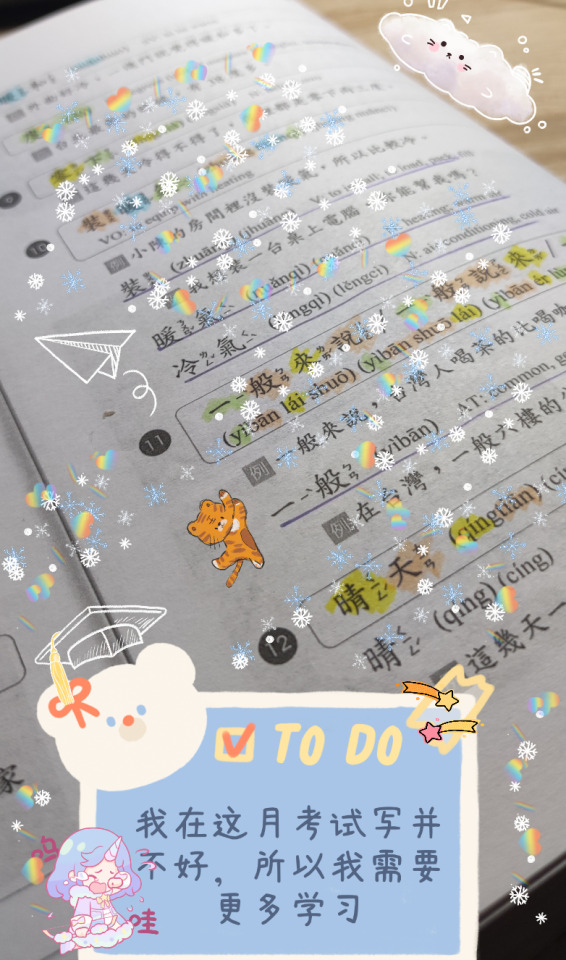
11 notes
·
View notes
Text
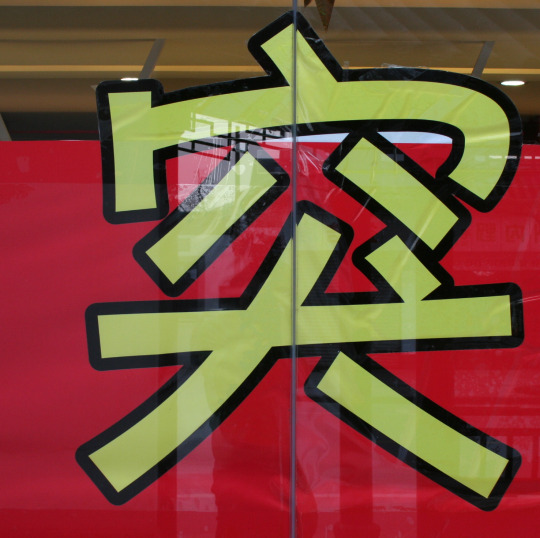
突 = to dash or move forward quickly; abruptly; suddenly; unexpectedly, protrude
It's all about things moving forward and unexpectedly with this one!
Random words that come to mind include unexpectedly or out of the blue 突然 (tūrán), as well as conflict 冲突 (chōngtū) or 突出 (tūchū), something that is prominent or that sticks out.
突发 (tū fā) is interesting as well — it means to break out or appear unexpectedly... like 疾病突发 (jí bìng tū fā), the outbreak of an illness.
It's also a cute onomatopeia for things that have a tapping sound or that chug along, like when your heart goes pit-a-pat (你的心突突地跳, nǐde xīn tūtū de tiào).
#mandarin#learn mandarin#chinese#language learning#learning chinese#chinablr#mandarinblr#studyblr#普通话#国语#中国#汉字#中文#汉语#hanzi#chinese characters
120 notes
·
View notes
Text
there's a YouTube video like "why doesn't Chinese have any circles?" and it's a youtuber asking it to a chinese woman in some sort of language museum and she proceeding to explain the entire history of the chinese writing system with zero mention of why there are no circles today. Then the video ends, no answer has been given.
5 notes
·
View notes
Text
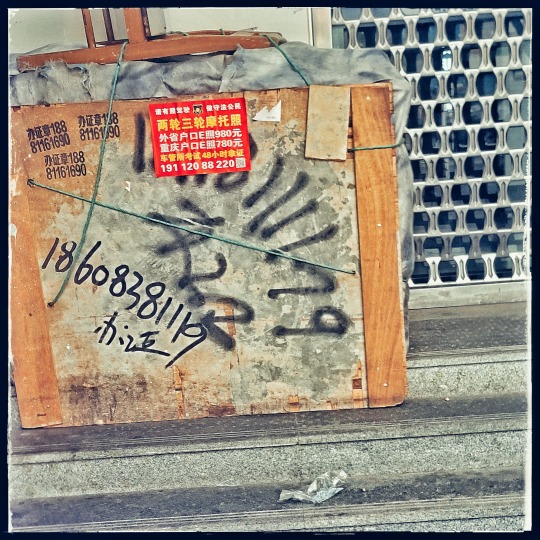
Street Abstract
Chongqing, China 2023
6 notes
·
View notes
Text
Interesting Japanese word compared to other EA languages: ソ連
[ソれん], (soren), Soviet union
Clipped from ソビエト連邦 [ソビエトれんぽう] (sobieto renpō)
Compared to for example Mandarin and Korean, this word is rarely if never written with a kanji.
Mandarin: 蘇聯 / 苏联 [sūlián]
Korean: 蘇聯 소련 [soryeon] (SK) / 쏘련 [ssoryeon] (NK)
Another funny name for the Soviet Union was 赤露 [せきろ] (sekiro) which means "to be naked" in Mandarin (chìlù).

2 notes
·
View notes
Text
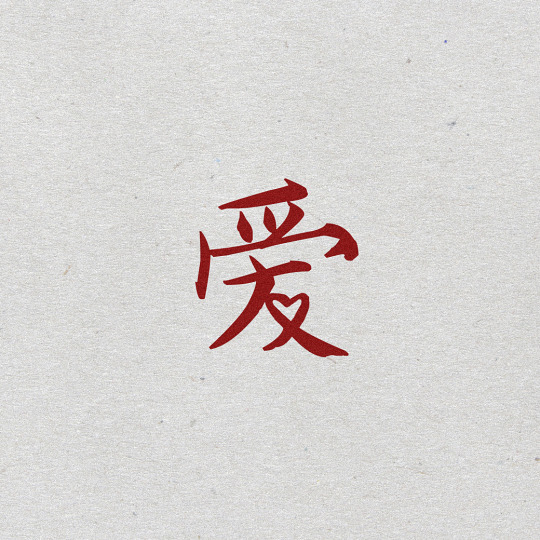
ài 'love'
3 notes
·
View notes
Photo

粤语残片
2 notes
·
View notes
Text
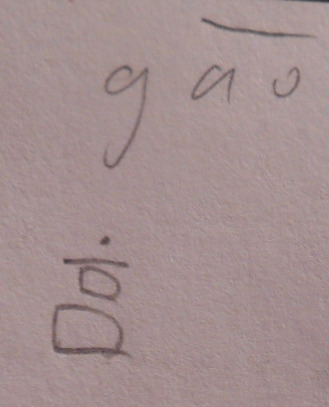
When I was writing 高 today I forgot the 冂 part and made a little snowman!
0 notes
Text

Oracle Bone
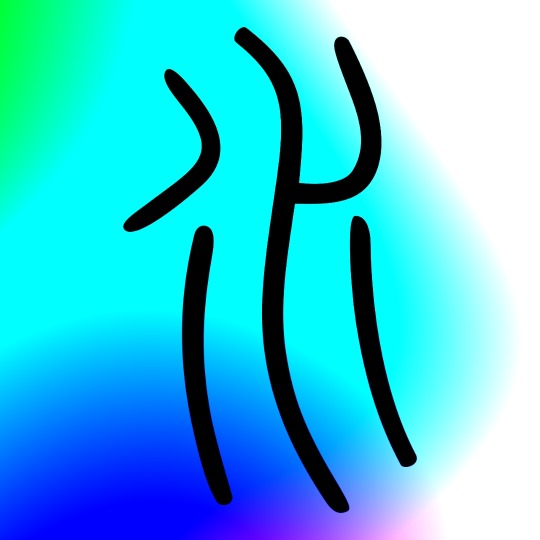
Small Seal

Modern
Mandarin: shuǐ, Japanese: みずmizu, English: water
Radical:
氵
Example:
汁
Juice, sauce, soup, sap
Images from the Ancient Chinese Characters Project / Richard Sears, via Wiktionary (public domain) with Tumblr filter.
0 notes
Text

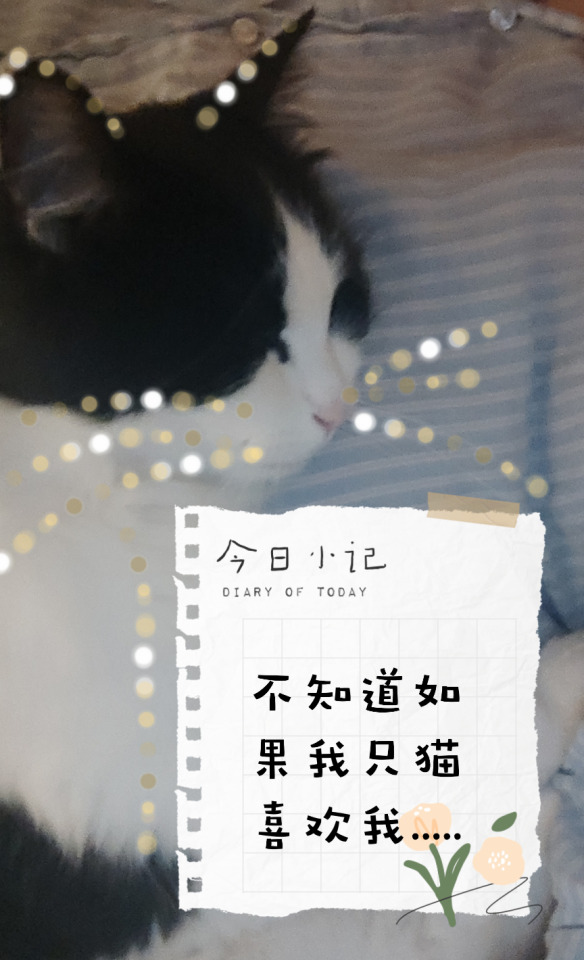
7 notes
·
View notes
Text

This is a fun character. The square, 口, on its own means "mouth", so it's like a bunch of shocked open mouths. Plus, it's pronounced like "eugh", which seems fitting. Eugh! 噩!
0 notes
Text
Free Amazon Kindle Book Promotion: Discover the artistry and intricacies of Chinese calligraphy -Through Ninety-Two Structural Principles for Chinese Calligraphy (汉字间架结构九十二法帖)
Free Amazon Kindle Book Promotion: Discover the artistry and intricacies of Chinese calligraphy -Through Ninety-Two Structural Principles for Chinese Calligraphy (汉字间架结构九十二法帖)
Start: Tuesday, October 3, 2023, 12:00 AM PDT
End: Saturday, October 7, 2023, 11:59 PM PDT
Don’t miss this limited time offer! Grab it @ https://www.amazon.com/dp/B0CK3QR2QX
If you missed this chance, you can grab it at the…
View On WordPress
#ArtistryInInk#Calligraphy#CalligraphyMasters#ChineseCalligraphy#ChineseCulture#Cultural#CulturalHeritage#GCSE#IB_Chinese#InkAndBrush#Kanji#书法#写汉字#汉字#汉字间架结构#硬笔书法
0 notes
Text
weird system i made for my chinese based conlang
Strokes:
Each stroke is single and continuos, never having breaks when in handwriting; Simple strokes can happen alone, while Complex strokes need to have another stroke to draw from. Each and any stroke can, at times, act as a (1 stroke) radical; Forms represent how a character is shown, they're necessary to represent any character, together they create series of strokes, with, inside that series of strokes, the strokes are separated by space marks, being separated by space marks, with the form being the first one to be input, marks are used to represent more concepts necessary for understanding.
Simple Strokes:
Dot. ㇔, D, Small dot, although at times it can be a short line pointing in any of several directions; can not be used in complex strokes.
Upward Horizontal. ㇀, T, Dash rightward and upwards, bottom to top, left to right.
Horizontal. ㇐, H, Dash rightwards, left to right.
Vertical. ㇑, S, Dash downwards, top to bottom.
Press. ㇏, N, Dash rightward and downwards, top to bottom, left to right.
Throw. ㇒, P, Dash leftward and downwards, top to bottom, right to left.
Clockwise. ㇁, W, Dash downwards, top to bottom, concave to the left, convex right.
Anticlockwise. ㇂, X, Dash downwards, top to bottom, concave to the right, convex left.
Circle. 〇, Q, Anticlockwise circle, in compounds it represents a general loop shape and is free of directionality.
Combining Strokes:
Hook. -g, Always put in the end of (simple or complex) strokes, a sharp turn with a hard stop.
Rounded. -q-, Always put between two simple strokes, shows that the transition is rounded.
Flat. h-, Always put before a simple stroke, makes it lean horizontally throughout it.
Straight. s-, Always put before a simple stroke, makes it lean vertically throughout it.
Brief. d-. Always put before a simple stroke, makes it small and brief, may sometimes be swapped for a Dot.
Forms:
Overlay ⿻:
Two characters, or more, overlaid over one another, not necessarily has an order but if a character overshadows the one that's being added to it, it can be put first, and also, in character spanning characters, they're also put last, for the reason listed before.
Left-(middle)-Right ⿰, ⿲, Top-(middle)-Bottom ⿱, ⿳:
Two or Three characters put either left (to middle) to right or top (to middle) to bottom, with those that come first being either the ones at the left or top, and then descending unto the right and bottom.
Full Enclosure ⿴, Top Enclosure ⿵, Bottom Enclosure ⿶, Side Enclosure ⿷, Top Left Enclosure ⿸, Top Right Enclosure ⿹, Bottom Left Enclosure ⿺, Bottom Right Enclosure J⿻:
Two characters that enclose one another, the first character being the one that's enclosing, and the other one being the enclosed.
Marks:
Number "1, 2, 3…"; Put immediately after a stroke to s=define their sequence when drawing.
Break "-"; Used for clarifications sake, used in between two strokes to define that they don't touch.
Sum "+"; Used for clarifications sake, used in between forms to show that a characters form of interaction is in between.
Length ">, <"; Used for clarifications sake, used in between strokes to define that one is significantly smaller or larger than another, with "⿻S > H" meaning that S is significantly shorter than H, and with "⿻S < H" meaning the opposite.
Root "], ["; Used for clarifications sake, to show that a series of stroke comes first, literally like how parenthesis work in mathematics, with [ used to start, and ] to end it.
Span "O⿻, A⿻, V⿻, H⿻"; Used for clarifications sake in character spanning overlays, O⿻ means a character span that's spans only in the inside of the character, A⿻ means that it starts spanning in the outside but ends in the inside, V⿻ means one that starts inside and ends outside, H⿻ means one that span the character fully, starting outside and ending outside.
So in this convoluted system, a character like, lets say 文 can be written as "⿻[⿱D1 [⿱H2 P3]] N4", like Ideographic Description Sequences, i normally use this one in conjunction with the more IDS system for characters i made for my own conlang, with an advantage being that you can clearly see the stroke order and how the character is made in more clarity, like the ambiguity between 土 and 士 in IDS (both have the "⿱十一" code) fades away (with them having "⿱[⿻H1 S2] < H3" for 土, and "⿱[⿻H1 S2] > H3" for 士).
It works for my conlang and it's the thing I'm most proud about it, i know that it has it's flaws, specially how complex it gets for characters larger than 6 strokes, but it can be a good for some uses, even though IDS still works for most things.
0 notes

